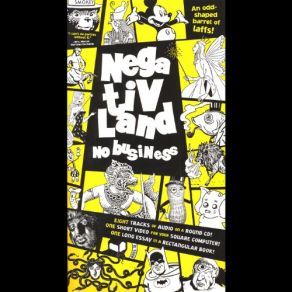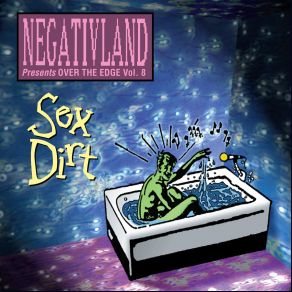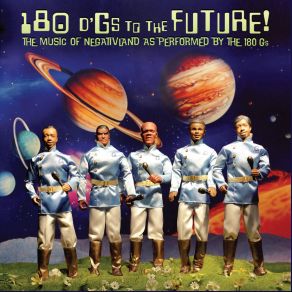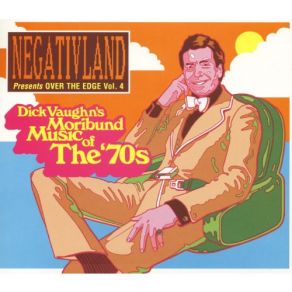Negativland
Wikimp3 information about the music of Negativland. On our website we have 36 albums and 2 collections of artist Negativland. You can find useful information and download songs of this artist. We also know that Negativland represents Alternative genres.
Biography
[Edit]Some will always say that practical jokers should expect to get attacked back themselves at some point. Others may note that within any jokes there are some human truths. Still others will just want to enjoy the jokes for themselves as jokes and nothing more. Three differing statements, all valid truths when applied to one of America's most curious, clever, and inventive bands in the last 20 years of the 20th century and beyond, Negativland. Though named after a track by cult Krautrock band Neu!, who also inadvertently provided the moniker of the band's label, Seeland, Negativland's origins can be seen more in the cut-ups of early Faust, the radio drama on acid approach of the devilishly funny Firesign Theatre and any number of sonic experimentalists and musique concrète composers. Sometimes appearing only to please themselves, other times perhaps willfully courting adverse attention without expecting the possible results, Negativland's saving grace has always been the sheer hilarity of its work. Without being a comedy band per se, and at many points making rather serious observations on the world around it, Negativland's cock-eyed, satiric vision of a barely sane planet often results in the best kind of humor — the kind that can be enjoyed again and again, especially because of the textured, complex sound of their many astonishing releases.
Formed in the San Francisco area, Negativland originally revolved around the talents of Mark Hosler and Richard Lyons, multi-instrumentalists with an ear for tape manipulation of all sorts. Their inspired stroke of genius was to recruit David Wills, more famously known as the Weatherman in later years, to make up the original trio. Wills, a cable TV repairman by trade, was just as obsessed with home recording and experimentation as the other two, and his wry, drawling vocals became the core trademark for many of Negativland's most notorious releases. Working with a few guests such as Peter Dayton on guitar, the trio released its debut self-titled release in 1980, notable as much for its packaging (each album featured individually wallpapered covers) as for its fragmented songs and textures. Apparently the still-teenage Hosler wanted it completed in part so he could feel he had accomplished something by the time he graduated from high school, a reasonable enough goal. Released in 1981, Points featured the same general lineup, with a new notable guest performer being Ian Allen, credited with tape processing on one track. However, an even more important bond was made that year — the recruitment of Don Joyce. Joyce had started a free-form radio show, Over the Edge, on the Bay Area's KPFA station that also explored fried humor and social commentary much like Negativland itself. As a result, Hosler and company appeared one day on the show shortly after it began, and since then Joyce has not only been the only constant member of Negativland aside from Hosler, but Over the Edge has become the regular sonic testing ground for most of the band's releases, still running strong after 20 years.
The next official Negativland album was the group's unquestionable breakthrough, 1983's A Big 10-8 Place, created by the core of Hosler, Allen, and Wills, with Lyons and Joyce as guests, along with a new face, Chris Grigg. Synthesizing the band's love of aural theater and subversion of expected pop and rock approaches, it was at an once hilarious and quietly harrowing vivisection of suburbia, winning them new fans and a growing reputation. Allen formerly departed after that point, while Joyce and Grigg became full-fledged members. The ensuing five-piece lineup — Grigg, Hosler, Joyce, Lyons, and Wills — kept up their various explorations on the air and in the studio, not to mention irregular but creative and well-received live performances and occasional dabbling in video work. Their reputation grew to the point where they were formally signed to Greg Ginn's legendary punk label SST, a decision that would have unexpected consequences some time later.
The band saw out the '80s with two major releases on SST, not counting a variety of tape-only efforts showcasing some of the best Over the Edge sessions. Issued in 1987, Escape from Noise took the scope of A Big 10-8 Place to even wider levels, touching on everything from how many time zones Russia covers to a rendition of "Over the Rainbow" sung by a little girl plagued with hiccups. Maintaining Negativland's blend of wit and darker themes, it might have simply remained a cult classic were it not for the appearance of the throbbing, creepy "Christianity Is Stupid" and, a few months after the album's release, a mass murder in Minnesota committed by a teenager against his family. Having seen tour plans fall through at around the same time, Negativland decided to distribute a fake press release hinting that the killer had in fact been arguing with his parents over "Christianity Is Stupid," which resulted in a slew of publicity and confusion over what the truth of the situation was. Some condemned the group's actions as tasteless exploitation, but Negativland preferred to think of it as an examination of media assumptions, and the whole affair became the backbone of 1989's Helter Stupid.
As if the storm of controversy over "Christianity Is Stupid" wasn't hectic enough, what the band did next was nearly enough to do itself in permanently. With barely any advance publicity — but all too suspiciously timed to appear just before U2's long-awaited 1991 album Achtung Baby — Negativland (with Lyons taking a temporary break) let a two-song single slip out in the summer of that year called U2. The contents turned out to be two radically different versions of the Irish band's anthem "I Still Haven't Found What I'm Looking For," using and chopping up the original beyond recognition, as well as splicing in bits from a notorious underground tape featuring legendary — or at least long-lived — American DJ Casey Kasem obscenely ranting about nearly everything.
What happened over the next few months is still the subject of legal threats on all sides, but first U2's label crashed down hard on the release, forcing it to be withdrawn after only a few days of being in the stores (all of which occurred without the knowledge of U2's members themselves, by all accounts). Kasem found out what happened as well and launched his own lawyers onto the case. Things then got even more hairy for the band when SST suddenly turned on the group, with Ginn seeking to recoup his financial losses via the bandmembers (even as a follow-up EP, Guns, slipped out). The ensuing barrage of claims and counterclaims, documented first in the band's 1992 CD/book The Letter U and the Numeral 2 and then in even more detail three years later in an expanded release called Fair Use, found Negativland beset by legal and monetary woes that almost sank it. At the same time, what had been a joke and a dare soon became a new focus for the bandmembers, who inadvertently made a name for themselves as crusaders for both artistic integrity and a freer interpretation of copyright law in opposition to corporate control.
This fresh direction, though one which grew naturally out of Negativland's previous work, helped reinvigorate the group, which reactivated the Seeland label with the release of Free in 1993. Accompanying tours found the band delivering both older hits (if you will) and extended meditations on the whole U2 saga (a notable though unofficial release, Negativconcertland, presented a typical show over its two discs). Perhaps most notable of all was Wills' live work — for any number of rumored personal reasons, he refused to tour, so the band did the next best thing and simply videotaped his parts for playback.
After further extricating itself as much as it could from the matter, as well as completely severing all links with Ginn and SST, Negativland kept on keeping on. Joyce's Over the Edge show continued as always, with an increasing number of old and new shows edited for presentation as formal releases, though 1996 brought the departure of Grigg from the band. Negativland's next formal release in 1997 looked to be another red-flag-to-the-bull effort, though whether out of foolhardiness or calculation is up to the individual to decide. Regardless, Dispepsi, featuring the guest contributions of newest member Peter Conheim, didn't bring down the wrath of Pepsi-Cola on the band's head even though the cover art was clearly a riff on the distinctive brand's logo while the content explored the very concept of advertising and its potentially destructive nature. 1998 featured a follow-up EP, Happy Heroes, while the following year saw the appearance of a full collaboration single with British radical stalwarts (and longtime Negativland fans) Chumbawamba, The ABCs of Anarchism.
The turn of the millennium brought a new, if generally lower-key, era to Negativland, with the group's most notable later work being a well-received tour, True/False 2000, featuring much newer material as well as an old standby or two, not to mention some amazingly nutty between-set skits and films (and, as always, Wills only turning up on video). In 2001 the band released a sort-of bootleg, These Guys Are from England and Who Gives a S**t, revisiting the whole U2 blow-up with numerous alternate versions (and the originals) of Negativland's most (in)famous effort. The following year saw the release of Death Sentences of the Polished and Structurally Weak, and in 2005 the band issued No Business and celebrated its 25th anniversary by curating an art exhibit in New York City called Negativlandland, which contained artwork that was inspired by the band's music, as well as Negativland music videos and original art created specifically for the event. Three years later, Thigmotactic was released on Seeland Records. In 2014, Negativland and Seeland released one of their most ambitious projects, It's All in Your Head, a concept piece about the practice of religion and why people place their faith in a supreme being. The album was packaged in a specially repurposed King James Bible; a limited-edition version of the set was accompanied by a Qur'an instead.
Title: Negativland Presents Over The Edge Vol. 2: Pastor Dick: Muriel's Purse Fund
Artist: Negativland
Genre: Rock, Alternative Rock, New Wave, Punk, Hardcore Punk, Post Punk, Pop, Pop Rock
Title: Negativland Presents Over The Edge Vol. 6: The Willsaphone Stupid Show
Artist: Negativland
Genre: Rock, Alternative Rock, Punk, Hardcore Punk
Title: Deathsentences Of The Polished And Structurally Weak
Artist: Negativland
Genre: Electronica, Experimental
Title: Negativland Presents Over the Edge, Vol. 5: Crosley Bendix Radio Reviews
Artist: Negativland
Genre: Rock, Alternative
Title: Negativland Presents Over the Edge, Vol. 7 - Time Zones Exchange Project
Artist: Negativland
Genre: Rock, Alternative
Title: These Guys Are From England And Who Gives A Shit
Artist: Negativland
Genre: Electronica, Experimental
Title: Negativland Presents Over The Edge Vol. 8: Sex Dirt
Artist: Negativland
Genre: Alternative Rock
Title: Over the Edge, Vol. 9: The Chopping Channel
Artist: Negativland
Genre: Rock, Alternative, Classical
Title: Negativland Presents Over the Edge, Vol. 8: Sex Dirt
Artist: Negativland
Genre: Rock, Alternative
Title: Negativland Presents Over the Edge, Vol. 6: The Willsaphone Stupid Show
Artist: Negativland
Genre: Rock, Alternative
Title: Negativland Presents Over The Edge Vol. 1: Jam Con '84
Artist: Negativland
Genre: Rock, Alternative
Title: Over The Edge, Volume 6: The Willsaphone Stupid Show
Artist: Negativland
Genre: Electronica, Experimental
Title: Happy Heros
Artist: Negativland
Genre: Rock, Alternative Rock, New Wave, Punk, Hardcore Punk, Post Punk, Pop, Pop Rock
Title: Negativland Presents Over The Edge Vol. 7: Time Zones Exchange Project
Artist: Negativland
Genre: Rock, Alternative Rock, Punk, Hardcore Punk
Title: Points
Artist: Negativland
Genre: Rock, Alternative Rock, New Wave, Punk, Hardcore Punk, Post Punk, Pop, Pop Rock, Alternative, Classical
Title: A Big 10-8 Place
Artist: Negativland
Genre: Rock, Alternative Rock, New Wave, Punk, Hardcore Punk, Post Punk, Pop, Pop Rock
Collections
Title: Originals Volume Seven (Compiled By Rong Music)
Genre: Electronica, Deep House, Hip Hop/R&B, Nu Disco, Funk
Title: Fabric 11: Swayzak
Genre: Electronica, House, Techno







































